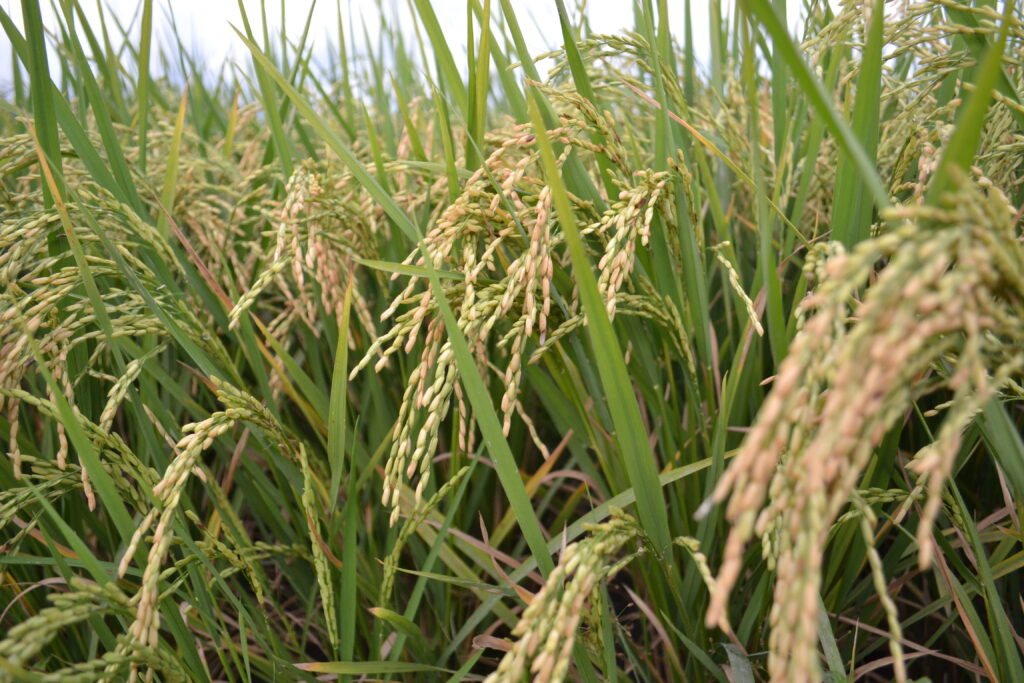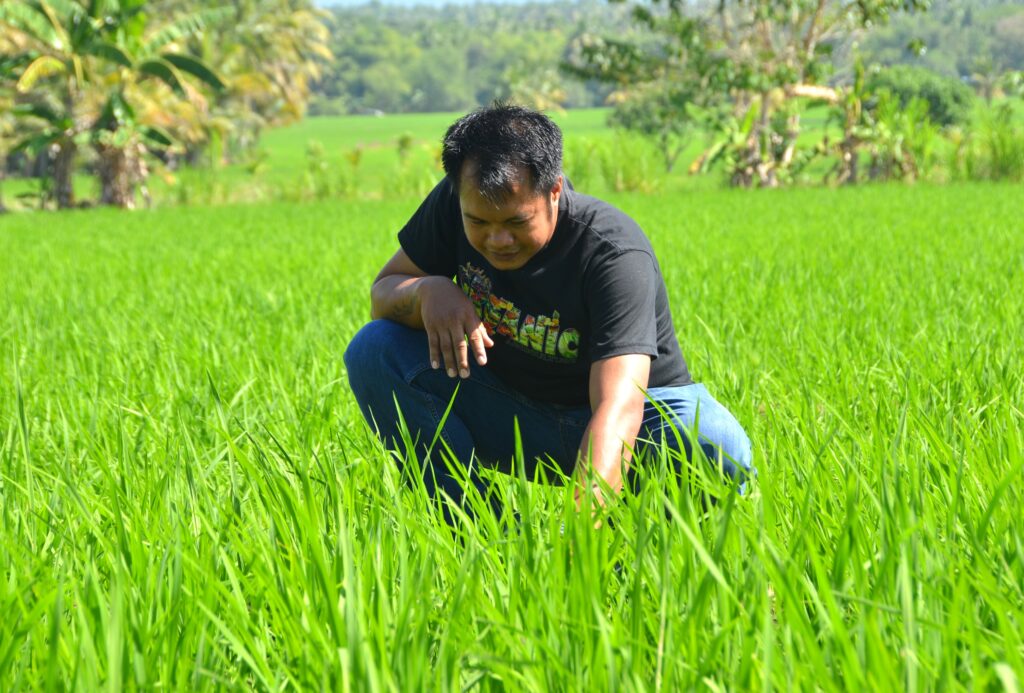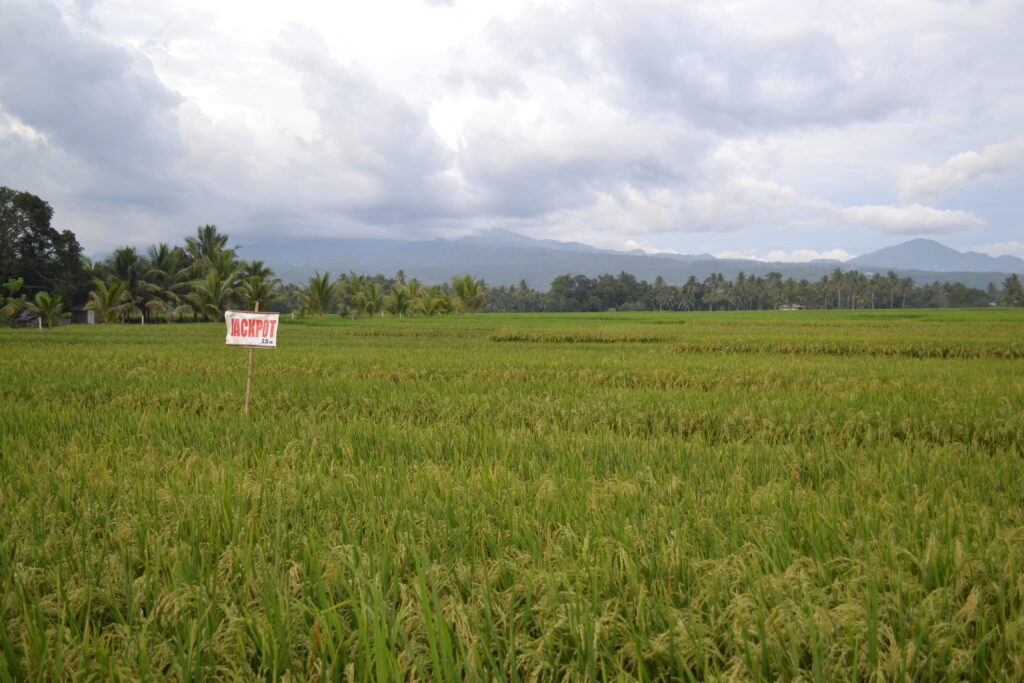Text and Photo by Henrylito D. Tacio

Rice is a political issue in the Philippines. Every time there’s an election, one of the agenda being talked about is rice. It’s understandable: rice is the staple food of Filipinos.
“If we did not have rice, our deepest comfort food, we would probably feel less Filipino,” the late food columnist Doreen Fernandez once said.
Rice plays a central role in our traditional meals. We consider rice as the heart of our cuisine. It’s a versatile ingredient that can be prepared in numerous ways. Besides eating it in regular meals (breakfast, lunch, and dinner), rice can be made into snacks, desserts, and other related meal products.
The Bureau of Agricultural Statistics reports that Filipinos spend more on rice than any other food. A survey conducted by the line agency of the Department of Agriculture showed that Filipinos, especially those from low-income households, are depending solely on rice more than ever for their daily dietary energy supply and dietary protein because it remains the most affordable food in the country.
In addition to calories, rice is a good source of magnesium, phosphorus, manganese, selenium, iron, folic acid, thiamin, and niacin. It is low in fiber and fat.
Now the bad news. The price of rice didn’t go down to as low as P20 per kilogram. What is even more alarming is that the Philippines is now the top rice importer among the 20 countries listed by SouthEast Asia Stats.
With rice importation of 3.8 million metric tons, the Philippines topped them all. The thickly-populated China came next with 2.8 million metric tons and Indonesia was close third with 2.5 million metric tons.
Vietnam, which is also a rice importing country, is the country’s top supplier, government data showed. As of September last year, we imported 2.68 million metric tons.
“Rice is the principal food for over 60% of mankind,” IRRI stressed. Rice is particularly important to Asia where over half of the world’s population lives.
Unlimited rice is very popular in our country, where eating is a matter of filling up. Studies show one-half cup of rice can furnish 82 calories of energy, enough to give someone energy to walk 26 minutes.
The Philippines is one of the largest rice consuming countries in the world. In the 2022/23 marketing year, statista.com reported, the Philippines consumed about 16 million metric tons of rice.
If rice alone is taken, a person can eat at least 300 grams. One kilogram reportedly can serve six to eight people. Another source said 30 kilograms can feed 90 people while 40 kilograms is enough for 120 people. One bag of rice (50 kilograms) is good for 150 people.
On average, Filipinos consume 114-120 kilograms of rice per capita per year. That’s almost double of the world average of 65 kilograms per capita per year, according to Dr. Eufemio Rasco, Jr., former director of the Philippine Rice Research Institute (PhilRice).
Filipinos eating rice is as old as rice cultivation itself. “The history of rice cultivation in the country dates back at least 3,000 years,” wrote Dr. Gelia T. Castillo, an academician and national scientist. “The building of rice terraces came a bit later.”
Rice production is among the most valuable sources of income of Filipino farmers. In fact, one-third of the arable land – 10 million hectares – is planted with rice, Dr. Rasco said. About 2.5 million families – that’s 40% of the country’s labor force – depend on rice farming and related activities for their livelihood.
Our country ranked eighth in world rice production in 2018, the Food and Agriculture Organization (FAO) reported. It is behind China, Indonesia, India, and other Southeast Asian nations.
Average annual production is 26 metric tons and the average yield is 3.83 tons per harvested hectare. Rice is widely grown in Luzon, Western Visayas, Southern Mindanao, and Central Mindanao.
The Philippine Statistics Authority (PSA) said the average cost of producing palay was P14.98 per kilogram in 2022. On the national level, the average cost of palay production in 2022 was P54,373 on a per hectare basis.
For every P100 a farmer spends, he can earn P140, studies have shown. A net revenue of P600,000 to P800,000 can be expected from a 10-hectare farm annually, provided the farmer grows a popular rice strain and has four planting cycles a year.
Our country has been planting rice since time immemorial. The world’s leading rice institution – the International Rice Research Institute – is located at Los Baños, Laguna. And yet, most Filipino farmers who grow rice are still poor.
Like most farmers, they face several constraints. One of which is insufficient water availability and unadjusted water levels, as well as uneven field levels in wet rice fields. For another, rice is susceptible to various pests and diseases.
These days, “high agricultural costs, rising food prices, and an over-reliance on imports are pushing farmers toward poverty,” said thenewhumanitarian.org pointed out.
The PSA reported that during the first phase of October last year, a kilogram of regular milled rice had an average retail price of P45.33 at the national level. These days, the price goes up to P50 or more.
“While reports indicate that there is enough food to feed the country, many Filipinos continue to go hungry and become malnourished due to inadequate intake of food and nutrients,” FAO said in a report. – ###


